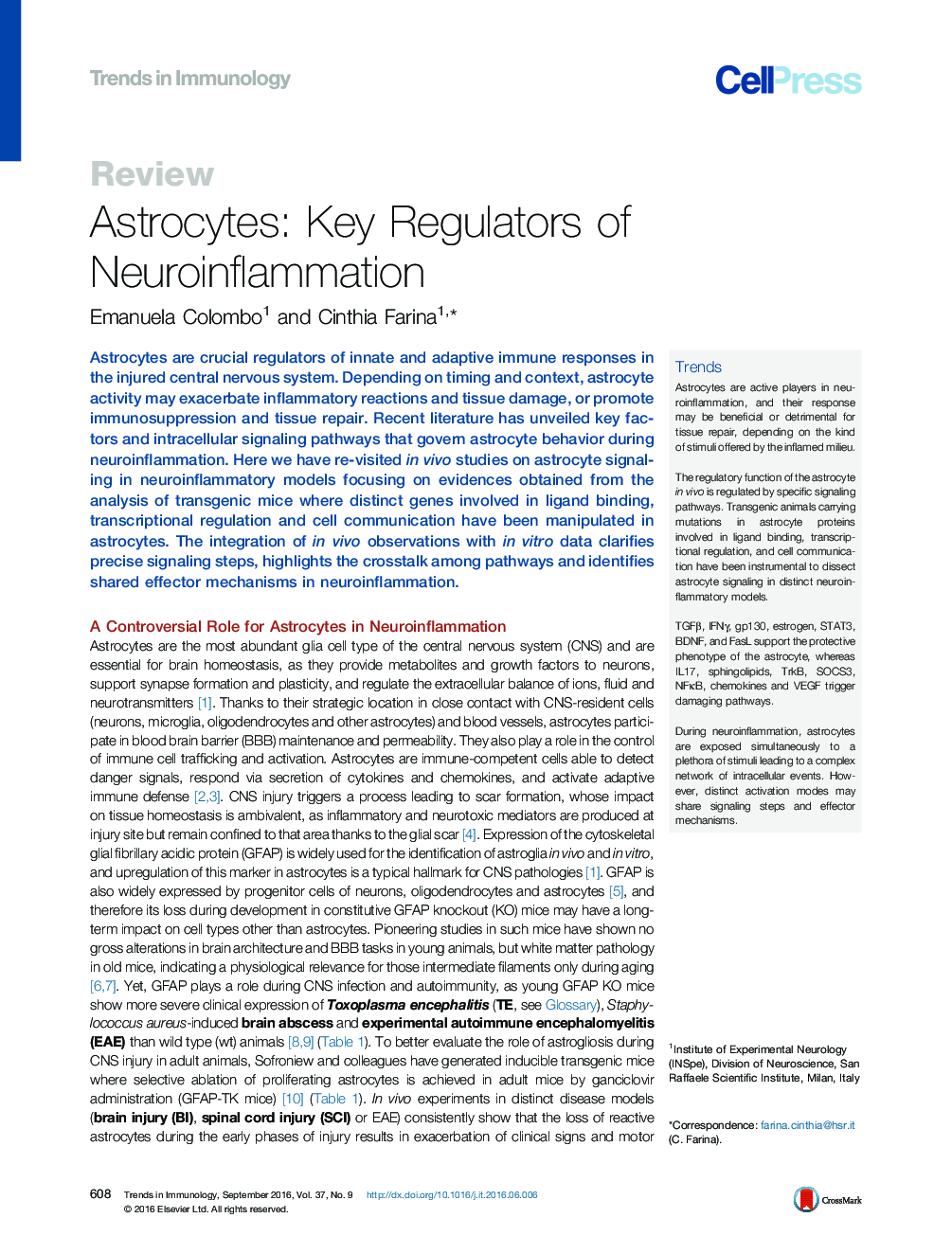| کد مقاله | کد نشریه | سال انتشار | مقاله انگلیسی | نسخه تمام متن |
|---|---|---|---|---|
| 4359681 | 1301092 | 2016 | 13 صفحه PDF | دانلود رایگان |
Astrocytes are crucial regulators of innate and adaptive immune responses in the injured central nervous system. Depending on timing and context, astrocyte activity may exacerbate inflammatory reactions and tissue damage, or promote immunosuppression and tissue repair. Recent literature has unveiled key factors and intracellular signaling pathways that govern astrocyte behavior during neuroinflammation. Here we have re-visited in vivo studies on astrocyte signaling in neuroinflammatory models focusing on evidences obtained from the analysis of transgenic mice where distinct genes involved in ligand binding, transcriptional regulation and cell communication have been manipulated in astrocytes. The integration of in vivo observations with in vitro data clarifies precise signaling steps, highlights the crosstalk among pathways and identifies shared effector mechanisms in neuroinflammation.
TrendsAstrocytes are active players in neuroinflammation, and their response may be beneficial or detrimental for tissue repair, depending on the kind of stimuli offered by the inflamed milieu.The regulatory function of the astrocyte in vivo is regulated by specific signaling pathways. Transgenic animals carrying mutations in astrocyte proteins involved in ligand binding, transcriptional regulation, and cell communication have been instrumental to dissect astrocyte signaling in distinct neuroinflammatory models.TGFβ, IFNγ, gp130, estrogen, STAT3, BDNF, and FasL support the protective phenotype of the astrocyte, whereas IL17, sphingolipids, TrkB, SOCS3, NFκB, chemokines and VEGF trigger damaging pathways.During neuroinflammation, astrocytes are exposed simultaneously to a plethora of stimuli leading to a complex network of intracellular events. However, distinct activation modes may share signaling steps and effector mechanisms.
Journal: - Volume 37, Issue 9, September 2016, Pages 608–620
